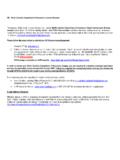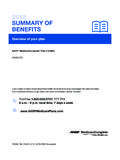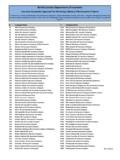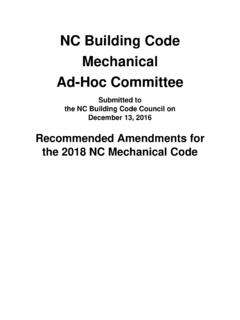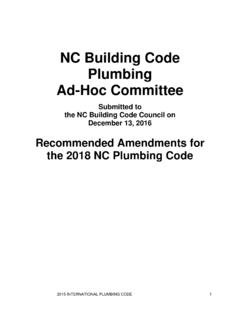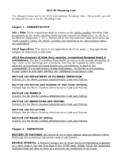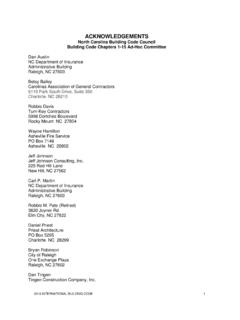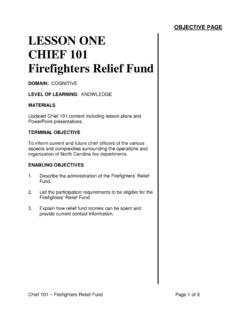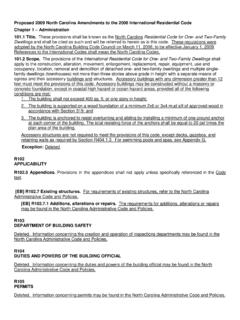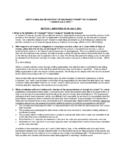Transcription of Drug Take-back Programs: Safe Disposal of …
1 Drug Take-back programs : safe Disposal of unused , expired , or unwanted Medications in North Carolina Prepared for: Coastal Coalition for Substance Abuse Prevention Prepared by: Tanya Elaine Simons 10 October, 2010 TABLE OF CONTENTS Executive 1 Key 2 5 Drug Take-back I.. 6 II. Drug Take-back Program 9 III. Challenges Facing Drug Take-back 10 IV. Successes Supporting Drug Take-back 12 V. The 14 15 1 EXECUTIVE SUMMARY The overwhelming majority of households today have unused medications that are either being stored in medicine cabinets or disposed of improperly. 1 The proper Disposal of unused , expired , or unwanted pharmaceuticals is a growing public health concern for residents of North Carolina as well as the United States in general.
2 This excess of medications in our homes creates significant opportunities for unintentional poisonings, illegal distribution, substance misuse or abuse, and environmental contamination. Compounding the problem of surplus medications, current federal and state legislation to address the issue of proper Disposal lacks uniformity, is limited and inconclusive. Thus, the burden of safe and proper drug Disposal is placed on emerging local community drug Take-back programs . 2 This white paper seeks to highlight the importance of, and pave the way for, a collaborative effort among North Carolina agencies to develop and advocate for a strategic statewide plan for a safe and secure drug Take-back Disposal effort. Proper Disposal of drugs is a growing health problem. Local Take-back programs are an emerging solution.
3 2 KEY COMPONENTS The key components outlined in this review and a summary of their contents include: I. Background Overview North Carolina Prescriptions. The average North Carolinian fills 14 prescriptions annually, totaling over 127 million prescription drugs that enter our households each year. Prescriptions. An estimated $200 billion dollars of pharmaceuticals were sold within the in 2007. Fate of unused Prescriptions. Over one billion dollars worth of prescription drugs each year are either being stored in medicine cabinets or thrown away. Outcomes of Improper Disposal . Improper Disposal of unused , expired , or unwanted pharmaceuticals adversely affects our communities through 1) unintentional poisonings, 2) misuse, abuse, and diversion, and 3) environmental contamination.
4 North Carolina Unintentional Poisonings. The North Carolina Division of Public Health estimates that since 1999, more than 75% of all unintentional poisonings have been due to the misuse or abuse of over-the-counter and prescription drugs. Misuse and Abuse. The National Institute on Drug Abuse has estimated that 20% of the population about 48 million Americans will use prescription drugs for nonmedical reasons in their lifetime. Environmental Contamination. The Associated Press has reported that the health-care industry is currently flushing an estimated 250 million pounds of unused or expired pharmaceuticals a year, creating a significant potential for environmental contamination. 3 II. Drug Take-back Program Characteristics Fate of Collected Drugs. Drugs collected by officials at permanent return programs or one-day events are disposed of according to EPA approved methods such as incineration.
5 Ongoing programs . Currently, over 30 permanent medication-return and one-day drug Take-back programs are established and happening across the III. Challenges Facing Drug Take-back programs Existing Laws and Regulations. Restrictive laws and regulations affecting the efficient handling and Disposal of controlled substances constitute the most significant challenge drug Take-back efforts must overcome. Equipment Costs. Permanent Disposal programs using secured drop-off bins can have costs estimated to be over $300,000. IV. Successes Supporting Drug Take-back programs Example of What Can Be Done. Maine s drug Take-back program reportedly collected over 380,000 pills and safely destroyed 250 pounds of controlled pharmaceuticals. Federal Officials Follow Suit.
6 DEA conducts first-ever national drug Take-back day, collecting over 121 tons of medications at more than 4,000 sites nationwide. Ongoing Congressional Efforts. In May 2010, the Attorney General s office signed a letter of support for two bills, one in the House and the other in the Senate ( 1359 and S. 3397, respectively) both of which were entitled, Secure and Responsible Drug Disposal Act of 2009. 4 IV. The Future Partnering of State Agencies. Effective environmental and policy changes will be critical for producing meaningful changes in drug Disposal practices in North Carolina. Such changes can only be accomplished through collaborative multidisciplinary partnerships. 5 INTRODUCTION According to the State Health Facts on Prescription Drugs, the average North Carolinian fills 14 prescriptions annually, totaling over 127 million prescription drugs that enter our households each year.
7 3 If United States statistics apply at all to North Carolina, many patients do not take or finish these medications as intended by the prescribing physician, leaving the problem of disposing of these unneeded, unwanted , or expired medications. Estimates show that over 40% of prescription drugs dispensed each year to consumers in the United States are never actually used. Instead, over one billion dollars worth of prescription drugs are either stored in medicine cabinets or thrown away. 1 These unused prescriptions in our homes not only have the potential to cause environmental contamination through improper Disposal , but they also contribute to the rising prevalence of unintentional poisonings, illegal prescription drug diversion, and substance misuse or abuse.
8 Given that Federal laws and regulations do not clearly and specifically describe how unused medications should be disposed of, state agencies are taking the lead and partnering together to become involved in the efforts to address this growing problem. In North Carolina, these strong partnerships will effect a change of culture, beliefs, and attitudes of its residents about the impact of unused medications on the safety of our children, the threat of substance abuse, and the pristine nature of our environment. North Carolinians fill over 127 million prescriptions each year. Over 40% of prescription drugs are never used. State agencies are taking the lead in Disposal efforts. 6 DRUG Take-back programs I. Background Currently, the United States is the largest market in the world for pharmaceutical products, and the use of both over-the-counter and prescription drugs continues to rise.
9 In 2007 an estimated $200 billion dollars of pharmaceuticals were sold within the United States. 4 Although the use of medications continues to increase, evidence-based guidance on effective methods remains unavailable to negate the adverse consequences of improperly disposing unused , expired , or unwanted drugs. Under existing policy provisions, individuals with controlled substances are especially challenged in this regard. Currently, these patients have three options to dispose of their medications when they are no longer wanted or needed: 5 1. Flush the prescription down the drain (for certain drugs as recommended by the FDA) 2. Mix the drug with an undesirable substance ( , kitty litter) and throw the mixture in the trash 3. Find a local community drug Take-back program and dispose of it in that manner However, these recommendations are not always disseminated or discussed with consumers, may be difficult for them to comply with, or cause more problems than they solve.
10 6 For example, advising consumers to dispose of controlled substances by flushing according to FDA recommendations does not guarantee that these same drugs are not introduced into our wastewater treatment plants, because these facilities do not remove them from the effluent water. Combining unused medications with kitty litter and disposing into the household waste also poses the threat of leaching contaminates into our landfills. Recommendations for disposing of controlled substances may in themselves cause problems. Evidence-based guidelines for proper Disposal are unavailable. Controlled substances present a particular Disposal challenge. 7 Local drug Disposal Take-back programs , while being the most environmentally friendly option, are faced with limitations due to legal restrictions concerning controlled substances and challenges from insufficient resources and coordination efforts.
